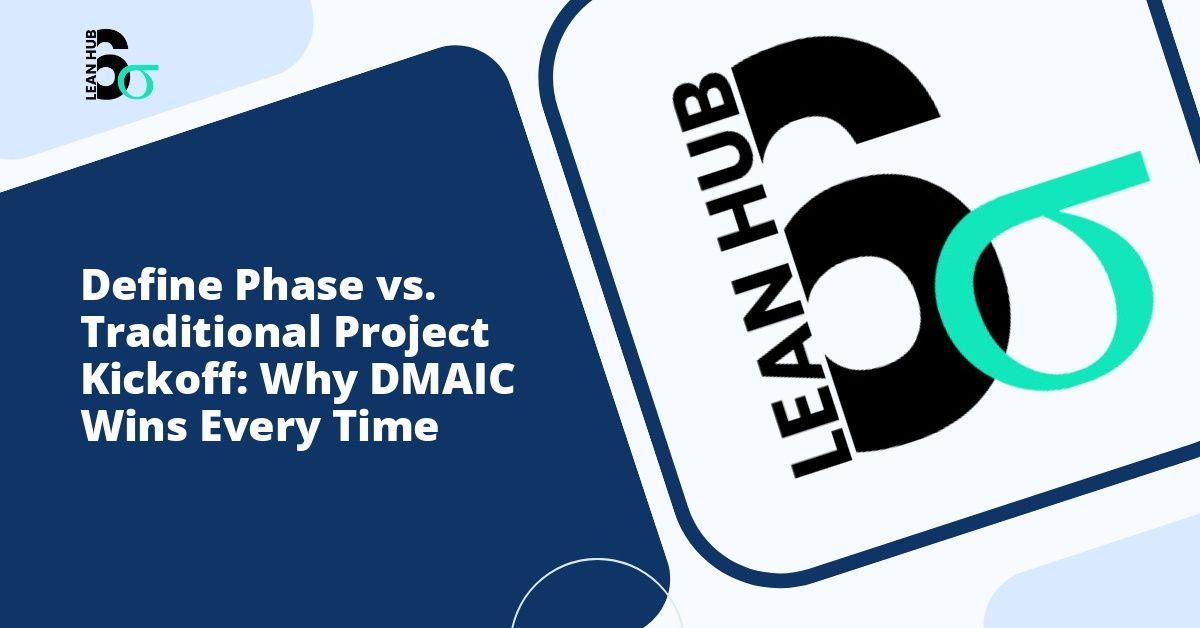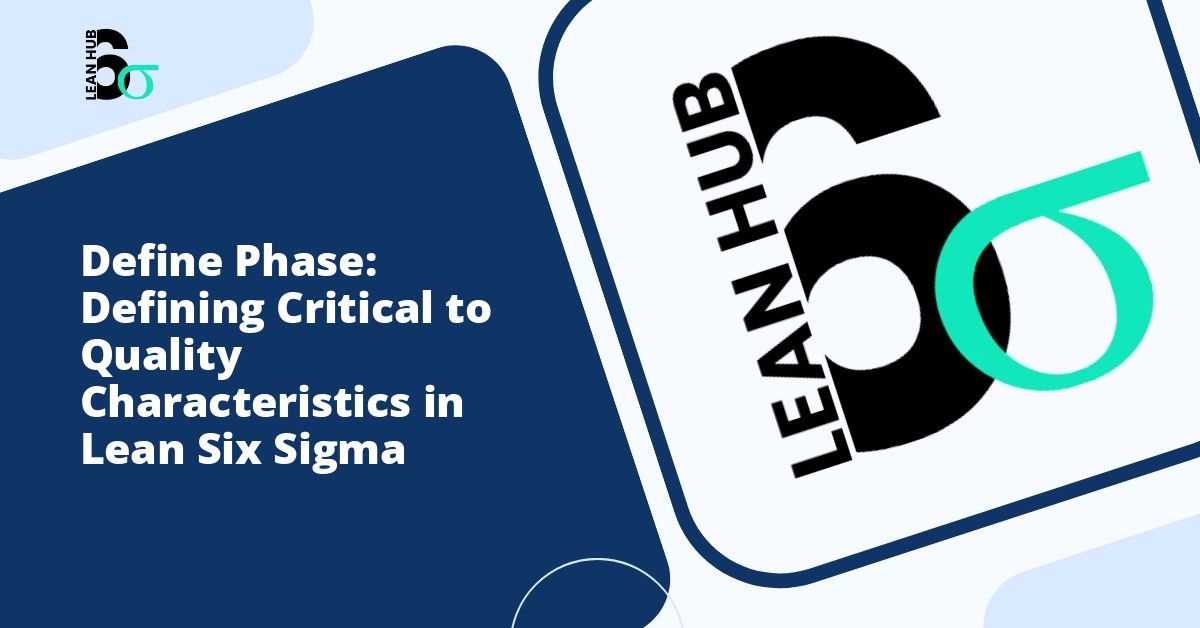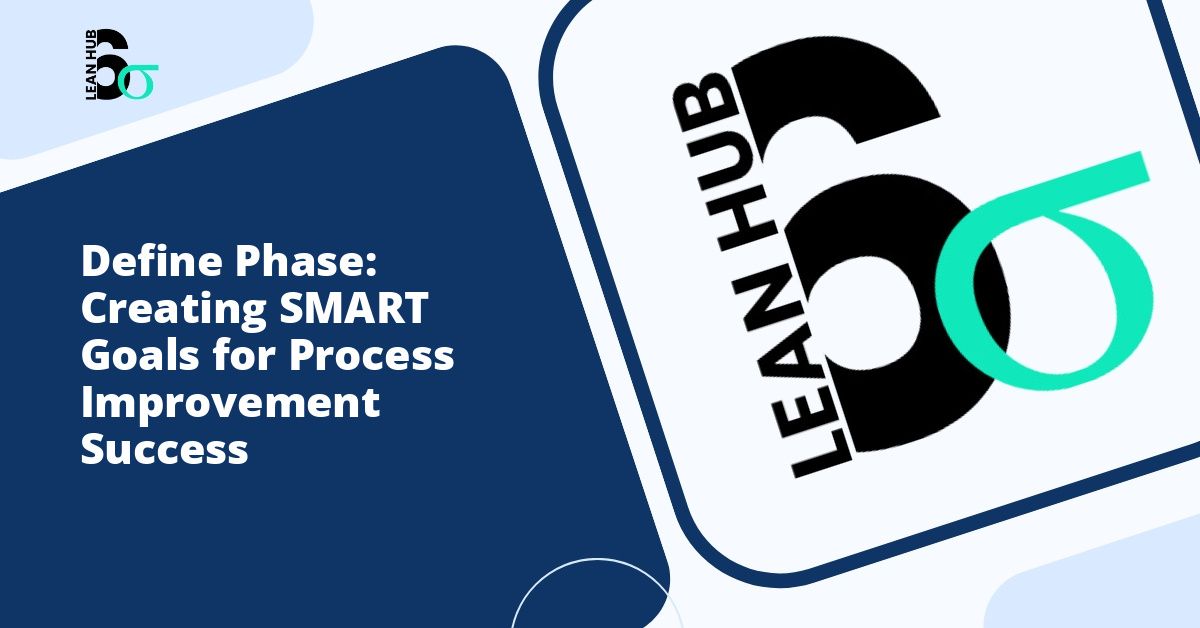In the world of project management and process improvement, how you begin a project often determines its ultimate success or failure. While traditional project kickoffs have served organizations for decades, the Define phase of the DMAIC methodology offers a structured, data-driven approach that consistently delivers superior results. Understanding the fundamental differences between these two approaches can transform how your organization tackles improvement initiatives.
Understanding Traditional Project Kickoffs
Traditional project kickoffs typically involve gathering stakeholders in a room, discussing the problem at hand, assigning roles, and establishing basic timelines. These meetings often focus on administrative details, team introductions, and high-level objectives. While these elements are important, traditional kickoffs frequently lack the rigor and structure needed to ensure project success. You might also enjoy reading about Project Charter Checklist: 12 Essential Elements Every Six Sigma Project Needs for Success.
The conventional approach usually includes agenda items such as project background, team member introductions, preliminary goals, resource allocation, and communication protocols. However, these meetings rarely dive deep into problem definition, root cause analysis, or establishing measurable success criteria. This surface-level approach can lead to scope creep, misaligned objectives, and wasted resources throughout the project lifecycle. You might also enjoy reading about How to Write a Lean Six Sigma Project Charter: Step-by-Step Guide with Examples.
The DMAIC Framework and Lean Six Sigma
DMAIC, which stands for Define, Measure, Analyze, Improve, and Control, represents a structured methodology within lean six sigma that guides teams through process improvement initiatives. This systematic approach has revolutionized how organizations approach problem-solving and continuous improvement. The framework provides a roadmap that ensures every project begins with clarity and ends with sustainable results. You might also enjoy reading about 5 Critical Mistakes Teams Make in the Define Phase and How to Avoid Them.
Lean six sigma combines lean manufacturing principles with Six Sigma quality management techniques, creating a powerful methodology for eliminating waste and reducing variation. The DMAIC cycle serves as the primary project methodology within this framework, ensuring that improvement efforts follow a logical, data-driven progression from problem identification through solution implementation and long-term sustainability.
Deep Dive into the Define Phase
The Define phase represents the foundation of any successful DMAIC project. Unlike traditional kickoffs that skim the surface, this phase requires teams to invest significant time and effort in truly understanding the problem, its scope, and its impact on the organization. This intensive upfront work pays dividends throughout the entire project lifecycle.
Key Components of the Define Phase
During the Define phase, teams focus on several critical elements that set the stage for project success. The project charter serves as the cornerstone document, clearly articulating the problem statement, project scope, goals, timeline, and team roles. This charter becomes the guiding document that keeps everyone aligned throughout the project.
Voice of the Customer (VOC) analysis ensures that the project addresses real customer needs and pain points. By gathering and analyzing customer feedback, teams can ensure their improvement efforts deliver genuine value rather than solving problems that do not matter to end users. This customer-centric approach distinguishes lean six sigma projects from internally focused initiatives that may miss the mark.
The SIPOC diagram (Suppliers, Inputs, Process, Outputs, Customers) provides a high-level process map that helps teams understand the boundaries of their project. This visual tool clarifies what falls within the project scope and what lies outside it, preventing scope creep and ensuring resources focus on areas where they can make the greatest impact.
The Recognize Phase Within Define
Some organizations expand the traditional DMAIC framework to include a Recognize phase, either as a precursor to Define or as an integrated component within it. The recognize phase focuses on identifying opportunities for improvement, prioritizing potential projects, and ensuring alignment with strategic business objectives. This additional step helps organizations avoid working on projects that do not deliver meaningful business value.
During the recognize phase, leadership teams evaluate multiple improvement opportunities using criteria such as financial impact, strategic alignment, resource requirements, and probability of success. This disciplined approach to project selection ensures that lean six sigma resources focus on initiatives that deliver the greatest return on investment. Organizations that skip this critical step often find themselves working on projects that consume resources without delivering proportional value.
Traditional Kickoff vs. Define Phase: A Detailed Comparison
Depth of Problem Understanding
Traditional kickoffs typically accept problem statements at face value, moving quickly to action planning. The Define phase, however, requires teams to rigorously examine the problem through multiple lenses. Teams must quantify the problem’s impact, understand its frequency and occurrence patterns, and identify who it affects. This thorough exploration often reveals that the perceived problem differs significantly from the actual root cause, saving organizations from solving the wrong problem.
Goal Setting and Success Metrics
While traditional projects might establish vague goals such as “improve customer satisfaction” or “reduce costs,” the Define phase demands specific, measurable, achievable, relevant, and time-bound (SMART) objectives. Teams must establish baseline measurements and clear target improvements, such as “reduce customer complaint rate from 15% to 8% within six months.” This specificity creates accountability and enables objective evaluation of project success.
Stakeholder Engagement
Traditional kickoffs often limit stakeholder involvement to a single meeting or presentation. The Define phase, conversely, requires ongoing stakeholder engagement throughout this initial phase. Process owners, end users, customers, and leadership all contribute their perspectives, ensuring that the project addresses the real problem from multiple viewpoints. This inclusive approach builds buy-in and reduces resistance during later implementation phases.
Data-Driven Decision Making
Perhaps the most significant difference lies in the role of data. Traditional kickoffs often rely on anecdotal evidence, assumptions, and gut feelings. The Define phase establishes a data-driven foundation from the very beginning. Teams gather preliminary data to validate that the problem exists, quantify its magnitude, and establish baseline measurements. This evidence-based approach eliminates bias and ensures resources focus on genuine opportunities rather than perceived issues.
Why the DMAIC Define Phase Wins Every Time
Reduced Project Failure Rates
Projects that begin with a rigorous Define phase experience significantly lower failure rates than those starting with traditional kickoffs. By investing time upfront to clearly define the problem, scope, and success criteria, teams avoid the miscommunication and misalignment that derail many improvement initiatives. The structured approach catches potential issues early when they are easiest and least expensive to address.
Better Resource Allocation
The Define phase ensures that organizations invest resources in projects that deliver genuine business value. By thoroughly vetting problems and quantifying potential benefits before committing significant resources, companies avoid wasting time and money on low-impact initiatives. This disciplined approach to resource allocation maximizes the return on lean six sigma investments.
Stronger Team Alignment
When teams complete a thorough Define phase, everyone shares a common understanding of the problem, goals, and approach. This alignment eliminates the confusion and conflicting priorities that plague traditionally launched projects. Team members can make independent decisions that support project objectives because they understand the big picture and their role within it.
Sustainable Results
Projects beginning with the Define phase are more likely to deliver sustainable, long-term improvements. The rigorous upfront work ensures that solutions address root causes rather than symptoms. Additionally, the clear documentation created during this phase supports knowledge transfer and helps future teams avoid repeating mistakes or reinventing solutions.
Implementing the Define Phase in Your Organization
Transitioning from traditional project kickoffs to the DMAIC Define phase requires commitment and training. Organizations should invest in lean six sigma training for project leaders and team members, ensuring they understand both the methodology and the tools required for success. Leadership support proves critical, as the Define phase requires more upfront time investment than traditional approaches.
Start by piloting the approach with a few high-priority projects, demonstrating its value before rolling it out organization-wide. Develop templates and tools that make it easier for teams to complete Define phase activities consistently. Most importantly, celebrate and communicate early wins to build momentum and support for this more rigorous approach to project initiation.
Conclusion
While traditional project kickoffs may seem faster and simpler, the DMAIC Define phase delivers superior results by establishing a solid foundation for improvement initiatives. By investing time upfront to thoroughly understand problems, engage stakeholders, and establish clear success criteria, organizations dramatically increase their probability of project success. In the competitive landscape of modern business, this structured, data-driven approach separates organizations that achieve sustainable improvement from those that struggle with failed initiatives and wasted resources. The Define phase does not just start projects better; it ensures they finish successfully.








